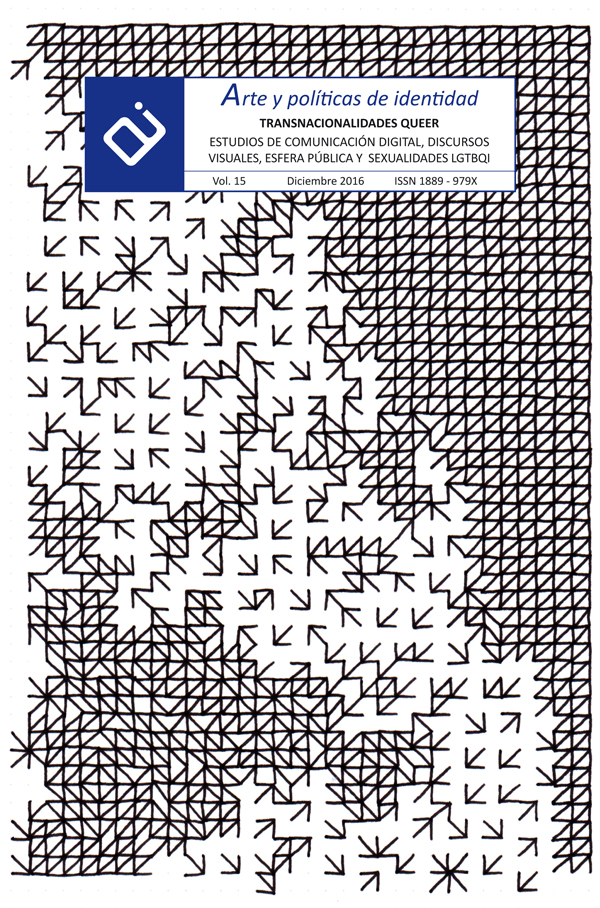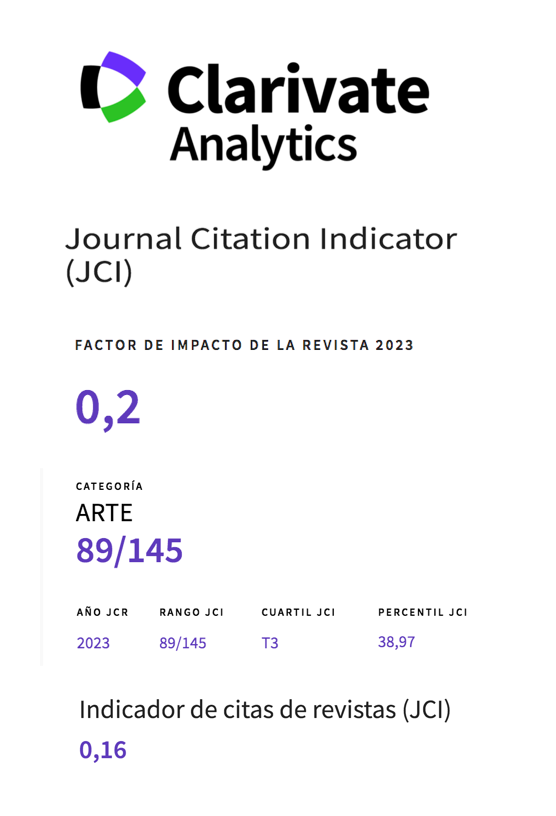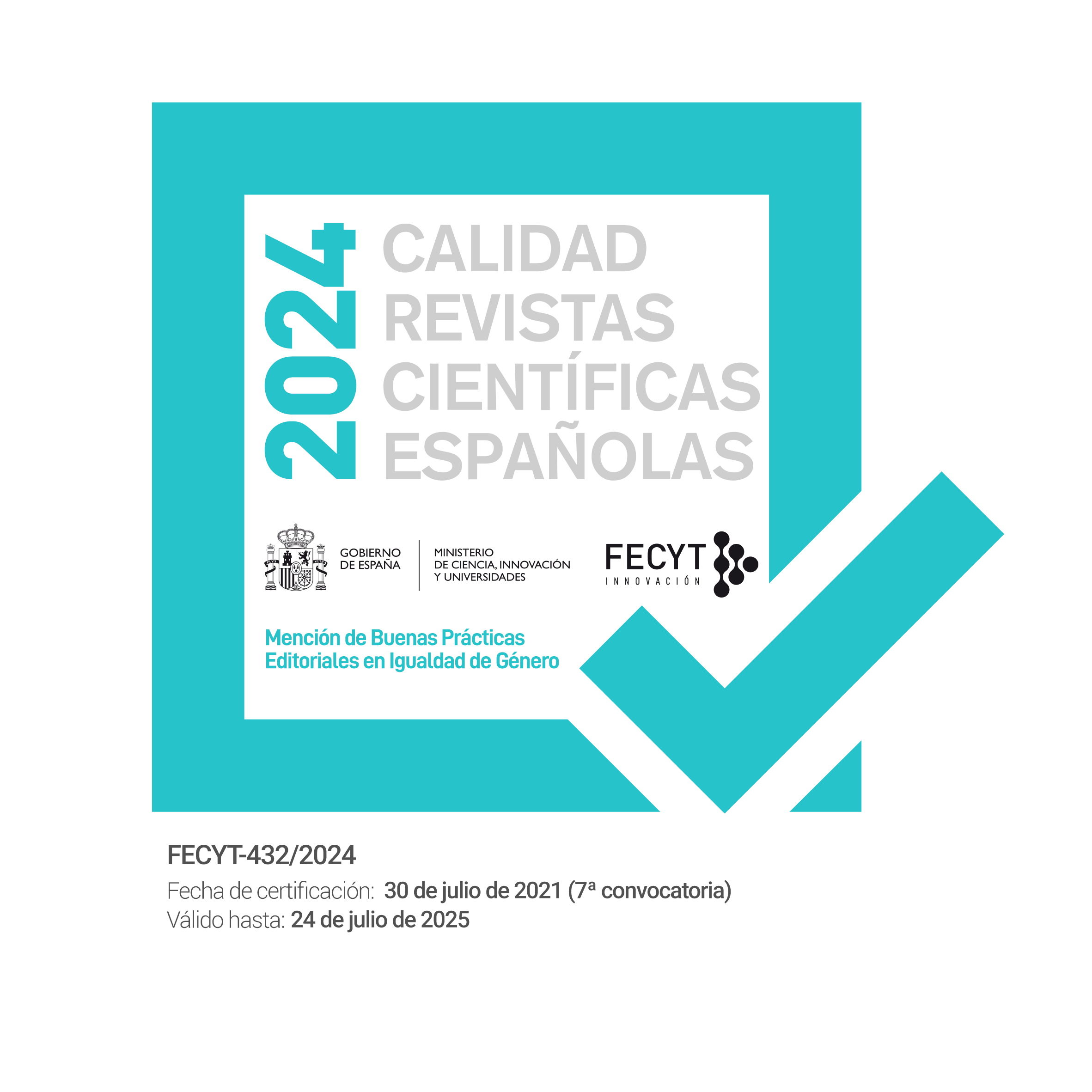Queer Game Scene
fracturas en el mainstream e incursiones en la escena independiente
Resumen
La visibilidad y el asentamiento de la comunidad LGTBQI en el espacio de la lúdica digital dista todavía de alcanzar lo conseguido en otros ámbitos de la cultura como el cine, la música o el arte. Sin embargo, desde hace poco más de una década, el mercado oficial del videojuego ha comenzado a incluir en sus productos, personajes, referencias y narrativas queer con una cierta profundidad. Mientras, movimientos surgidos dentro la escena indie como la queer game scene o el movimiento gaymer, y desarrolladorxs independientes como Anna Antrhopy o Mattie Brice, han iniciado también un importante proceso de visibilización y vindicación. Para entender mejor estos cambios, en el texto se revisan clichés, estéticas, narrativas, retóricas, mecánicas, políticas, mercado, público y comunidades, en un recorrido intercalado -aunque cronológico, que va desde la esfera mainstream a la independiente.
Descargas
-
Resumen649
-
PDF461
Citas
Aarseth, E. (1997). Cybertext: Perspectives on Ergodic Literature.Baltimore: Johns Hopkins University Press.
Andrew, R. (2012). My avatar and me – Gender and personality predictors of avatar-self discrepancy. Computers in Human Behavior, 28, 97-106.
Antrhopy, A. (2012). Rise of the Videogame Zinesters How Freaks, Normals, Amateurs, Artists, Dreamers, Dropouts, Queers, Housewives, and People Like You Are Taking Back an Art Form. Nueva York: Seven Stories Press.
Asociación Española de Videojuegos, AEVI (2015). El videojuego en el mundo. Recuperado de: http://www.aevi.org.es/la-industria-del-videojuego/en-el-mundo/ [última consulta: 10/10/2016].
Bogost, I. (2006). Unit Operations: An Approach to Videogame Criticism. Massachusets: MIT Press.
Brice, M. (2012). Mainichi. Recuperado de: http://www.mattiebrice.com/mainichi/[última consulta: 06/07/2016]
Brown, A. (2015). Sexuality in Role-Playing Games. Londres: Routledge.
Castillo, J. C. (2015). Videojuegos: 3 décadas de personajes LGTB. Recuperado de: http://www.fsgamer.com/videojuegos-3-decadas-de-personajes-lgtb-i.html/2[última consulta: 20/11/2016].
Entertaiment Software Association, ESA (2016). Essential Facts about the Computer and Video Game Industry 2016. Sales, Demographic and Usage Data. Recuperado de: http://essentialfacts.theesa.com/ [última consulta: 20/09/2016].
Gaider, D. (2014). The Gaider Archives. Recuperado de: http://the-gaider-archives.tumblr.com [última consulta: 20/09/2016].
Games for Change. Recuperado de: http://www.gamesforchange.org/play/mainichi/ [última consulta: 06/07/2016].
Gray, K. L. (2015). Race, Gender, and Deviance in Xbox Live: Theoritical Perspectives from the Virtual Margins. Londres: Routledge.
Halberstam, J. (2001). El arte de lo feo. Masculinidad femenina y estética de la modernidad. En Héroes Caídos. Masculinidad y Representación (pp. 196-263). Valencia: EACC, Espai d’Art Contemporani de Castelló.
Hardt M. & Negri T. (2005). Imperio. Barcelona: Paidós.
Hart, A. (2014). Game Developer Brianna Wu Flees Home After Death Threats. Recuperado de http://www.huffingtonpost.com/2014/10/11/game-developer-death-threats_n_5970966.html[última consulta: 28/11/2016].
Interactive Software Federation of Europe, ISFE (2016). Gametrack European Summary Data 2016. Recuperado de: http://www.isfe.eu/sites/isfe.eu/files/attachments/gametrack_european_summary_data_2016_q1.pdf [última consulta: 20/09/2016].
Jenkins, H. (1998). Complete Freedom of Movement: Video Games as Gendered Play Spaces. En Cassell J. & Jenkins H. (Eds.).Beyond Barbie to Mortal Kombat: Gender and Computer Games (pp. 262-97). Cambridge: MIT Press.Juul, J. (2010). A Casual Revolution: Reinventing Video Games and Their Players. Cambridge: MIT Press.
Keong, J. (2013). Just Making Things And Being Alive About It: The Queer Games Scene. Recuperado de: http://www.polygon.com/features/2013/5/24/4341042/the-queer-games-scene[última consulta: 28/09/2016].
Koster, R. (2012). Two Culures and Games. Recuperado de: http://www.raphkoster.com/2012/07/06/two-cultures-and-games/[última consulta: 16/10/2016].
Lachel, C. (2014). What’s Wrong With the Official Sega Genesis Seal of Quality? Recuperado de: http://www.defunctgames.com/history/29/whats-wrong-with-the-official-sega-genesis-seal-of-quality [última consulta: 23/11/2016].
Lepinsky, J. (2012). Video-Game Designer Anna Anthropy Describes The Life Of A Radical, Queer, Transgender Gamer. Recuperado de: http://www.politico.com/states/new-york/city-hall/story/2012/04/video-game-designer-anna-anthropy-describes-the-life-of-a-radical-queer-transgender-gamer-067223[última consulta: 28/09/2016].
Lipovetsky, G. (2007). La felicidad paradójica. Ensayo sobre la sociedad hiperconsumista. Barcelona: Anagrama
McCullough, J. J. (2007). Nintendo’s Era of Censorship. Recuperado de: http://www.tanookisite.com/nintendo-censorship/ [última consulta: 23/11/2016].
McLaughlin, M. (2013). New GTA V release tipped to rake in £1bn in sales. Recuperado de: http://www.scotsman.com/lifestyle/gadgets-gaming/new-gta-v-release-tipped-to-rake-in-1bn-in-sales-1-3081943 [última consulta: 28/09/2016].
Metacritic (2016). Life is strange. Recuperado de: http://www.metacritic.com/game/pc/life-is-strange[última consulta: 20/09/2016].
Moosa, T. (2015). Colorblind: On The Witcher 3, Rust, and gaming’s race problema. Recuperado de: http://www.polygon.com/2015/6/3/8719389/colorblind-on-witcher-3-rust-and-gamings-race-problem. [última consulta: 24/11/2016].
Moosa, T. (2016). Mafia III is just a game, but it shines a spotlight on the reality of racism. Recuperado de: https://www.theguardian.com/commentisfree/2016/oct/20/mafia-iii-videogame-racism [última consulta: 25/11/2016].
Mortensen, T. E., Linderoth, J. & Brown, A.M.L. (Ed.) (2015). The Dark Side of Game Play: Controversial Issues in Playful Environments. Londres: Routledge.
Mulvey, L. (1988). Placer visual y cine narrativo (Screen, 1975, vol. 16, no 3). Valencia: Centro de Semiótica y de Teoría del Espectáculo.
Nooney, L. (2013). A Pedestal, A Table, A Love Letter: Archaeologies of Gender in Videogame History. Recuperado de: http://gamestudies.org/1302/articles/nooney [última consulta: 15/09/2016].
Ouellette, M.A. (2013). Gay for Play: Theorizing LGBTQ Characters in Game Studies. En Thompson, J.C. & Ouellette, M.A. (Ed.), The Game Culture Reader (pp. 47-65), Newcastle upon Tyne: Cambridge Scholars Publishing.
Pratt, M.L. (2002). Globalización, desmodernización y el retorno de los monstruos (Tercer Encuentro de Performance y Política). Lima: Universidad Católica.RPG Maker VX. Recuperado de: http://www.rpgmakerweb.com/[última consulta: 06/07/2016].
Sentamans, T. y Martínez Fabre, M. (2007). Deslices de un avatar: prestidigitación y praxis artística en Second Life. En Inclusiva-net. Nuevas dinámicas artísticas en modo web 2 (pp. 55-81). Madrid: Área de las Artes. Dirección General de Promoción y Proyectos Culturales. Recuperado de: http://medialab-prado.es/article/documentacion_-_1_encuentro_inclusiva-net] [última consulta: 28/09/2016].
Shaw, A. (2014). Gaming at the Edge: Sexuality and Gender at the Margins of Gamer Culture. Minessota: University of Minessota Press.Smith, C. (2013). Depression Quest Dev Faces Harassment after Steam Submission. Recuperado de: http://www.escapistmagazine.com/news/view/130525-Depression-Quest-Dev-Faces-Harassment-after-Steam-Submission-Update [última consulta: 21/09/2016].
The Queerness and Games Conference 2016. Recuperado de: http://www.qgcon.com [última consulta: 21/09/2016].
Valencia, S. (2010). Capitalismo Gore. Tafalla: TxalapartaWallace, A. (2013). Real indie: the queer game scene. Recuperado de: http://www.gameskinny.com/pzhbj/real-indie-the-queer-game-scene [última consulta: 20/09/2016]
VGchartz (2016). Platforms Totals. Recuperado de: http://www.vgchartz.com/analysis/platform_totals/Software/Global/ [última consulta: 23/11/2016]
Works published in this journal are subject to the following terms:
- The Service of Publications from the University of Murcia (publishing house) keeps the published works’ copyrights, and favors and allows the reuse of these works under the license indicated in point 2.
- Works are published in the journal’s online edition under the license Creative Commons Reconocimiento-NoComercial-SinObraDerivada 3.0 España(texto legal). They can be copied, used, disseminated, transmitted and publicly exhibited, as long as: i) the author and original source of publication are cited (journal, publishing house and work’s URL); ii) they are not used for commercial purposes; iii) the existence and specifications of this license are mentioned.
3. Conditions for auto-file. It is allowed and encouraged that authors share electronically their pre-print version (the pre-reviewed version) and /or post-print version (the reviewed and accepted version) of their Works before the publication, since it promotes its circulation and dissemination. RoMEO color: green.










